This fox squirrel I photographed this spring fell asleep while I was taking pictures…
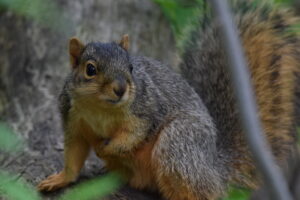
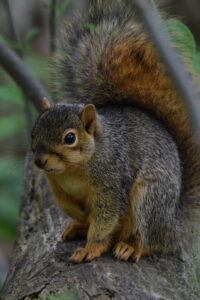
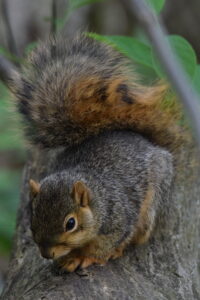

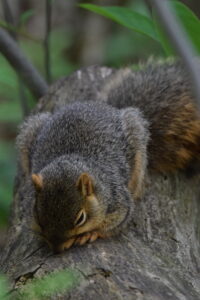
This fox squirrel I photographed this spring fell asleep while I was taking pictures…






One evening recently while I was in the woods, I noticed some spiderwebs being backlit by the setting sun. As it turns out, my newer lens works great for spiderwebs, and after taking a couple fairly standard head-on pictures, I started experimenting with the angle. I didn’t have very long to work with this scene, though, because the sun was only illuminating each web for a few minutes (there were three webs that I found). I would have enjoyed more time with this subject, but I was happy with this photo.
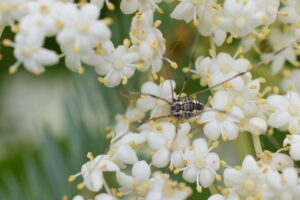
I am quite fond of harvestmen (aka daddy long legs). I’m not exactly sure why I like them so much; the best way I’ve managed to describe it is that they just seem like peaceful little forest spirits… although they’re not found only in the woods, but they do seem particularly plentiful there. So, I suppose, much like the woods, they are a calming presence. Getting good photos of them, though, is a bit tricky. It isn’t that they are uncooperative (they’re actually probably more cooperative than most creatures), but super close up pictures of them tend to look pretty awkward with their legs mostly not in the frame, and they like to hang out in fairly dim places, making it hard for their colors and markings to be visible. I am now finally building up a small collection of harvestman photos that I like.
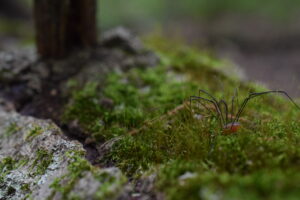
Despite being pretty common, easy to find creatures, not many people seem to know what harvestmen are; they are often called spiders, but, though they are arachnids, they belong to their own group. (They’re actually thought to be more closely related to scorpions.) The name ‘harvestmen’ refers to the order opiliones, which is a pretty general category. (For example, butterflies and moths are an order, and beetles are another order. And so are spiders.) So, not surprisingly, there are lots of different kinds of harvestmen. They come in many different sizes, shapes, and colors and have a variety of diets and habits. The harvestmen in these photos are only a tiny fraction of their variety.
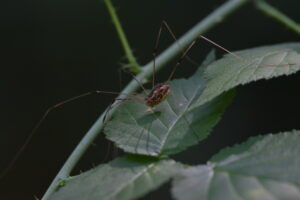
Although harvestmen look similar to spiders, they don’t have two distinctly separate body segments as spiders do. They also don’t produce silk or venom. Instead of venom carrying fangs, they have a pair of tiny pincer like claws. (I’ve actually seen them carrying things with these claws, though I haven’t gotten a good look at the claws themselves as they’re tucked under the harvestman’s body.) They also use their second pair of legs (from front) as feelers and I’d noticed them probing around with them (and also that that pair of legs is often extra long) before I was able to find information about it.


I’m always happy to see these little guys even if I don’t end up taking pictures of them, but I do hope I’m able to get better at photographing them.
This spring while out in the woods I noticed a blue jay watching me from a branch nearby. The jay’s idle curiosity gave me a generous opportunity to get some photos (I think I even had to switch lenses). I wouldn’t be surprised if this particular bird recognized me as a regular visitor to the woods.
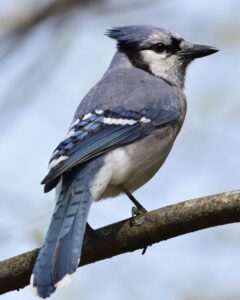
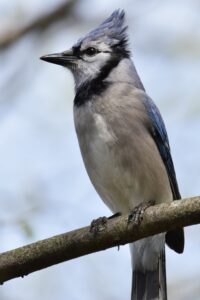
There are a couple of fairly common woodland butterflies that I usually start to see right around this time of year: the comma butterfly and the mourning cloak butterfly. It should be a bit of a toss-up which I see first since they start to appear at roughly the same time. In practice, it seems like I usually spot the mourning cloak first. This year was no exception to that; I spotted my first mourning cloak on the 21st (I didn’t have my camera with me at the time, though), and I haven’t spotted a comma yet.
The two species are relatively closely related and have a similar strategy that allows them to be present super early in the spring; both overwinter as adults and can feed on tree sap so they aren’t dependent on flowers blooming to be active.
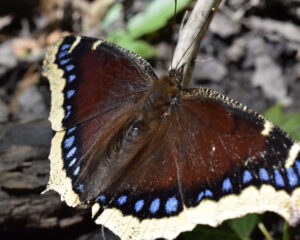
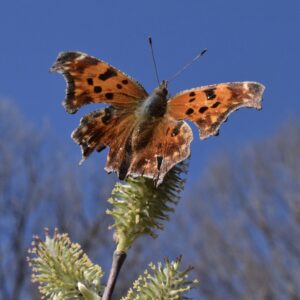
We have some pretty cool looking trees in the woods here, but it can be kind of tricky to get photos of them that really show off their unique character. Getting just the right angle on these massive oaks is a challenge, especially in the woods where you have limited options because there are so many other trees around. This tree is amazing looking and I’ve taken pictures of it before, but this is the first time I’ve been satisfied with the results.
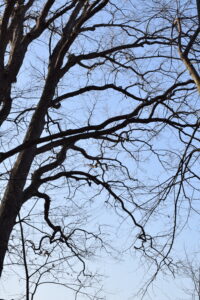
It occurred to me that in one of my last posts ‘Life in a Dead Tree’, I described the bees I found nesting in the tree, and included the best photo I’d managed to take of one of them, which wasn’t very good. I knew at the time that it wasn’t particularly good, but decided it was better than nothing. That didn’t stop me from trying to get a better one next time their nesting season came around. It took me over a month of attempting whenever the weather seemed good for bees to be active, but I finally managed to get the photos I was after. And some of my ‘failed’ attempts were actually kind of cool in their own right.
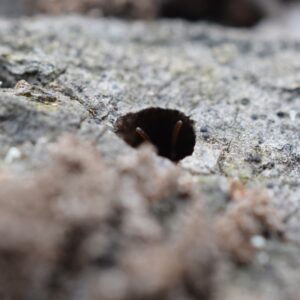
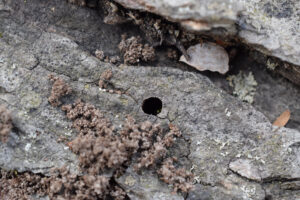
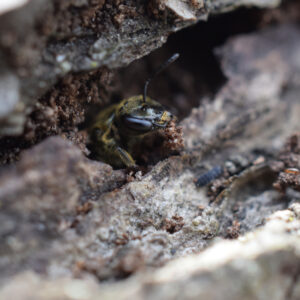
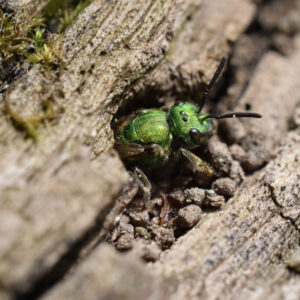
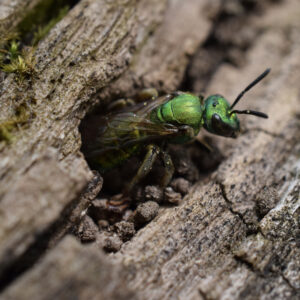
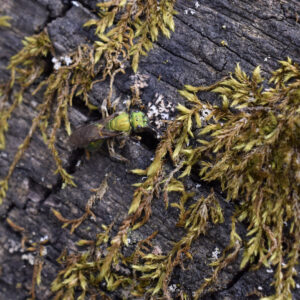
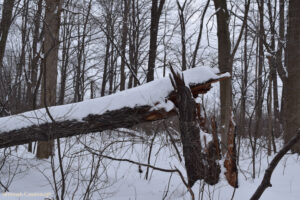
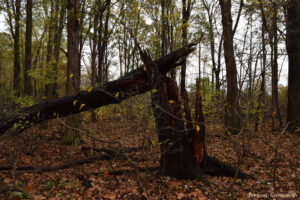
There is a particular fallen tree in the woods that I visit frequently, because there is usually something interesting to see there. When it was still standing, I identified it as a wild cherry, and although I’ve seen others, this one was the largest.
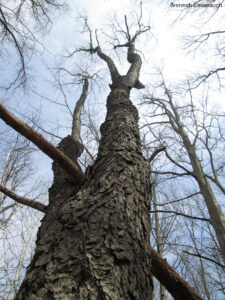
A while after the tree fell, I started to notice a lot of different mushrooms growing on it, and I started to make a habit of checking on it to see if there were any particularly photogenic mushrooms there while I was out taking pictures in the woods.
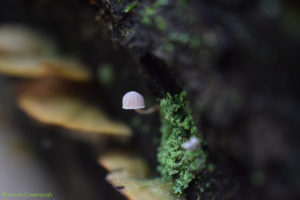
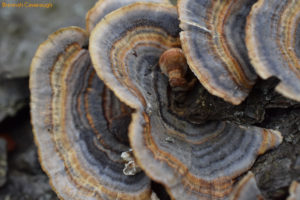
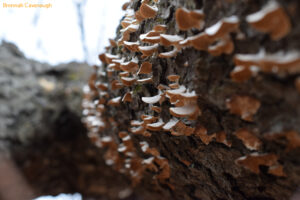
This spring while out in the woods taking pictures of the various wildflowers and trying to determine what kind of pollinators they were providing for, I noticed new interesting things happening with the downed cherry. At first I noticed the metallic green bees darting around the dark, scaly bark. Then I saw something green and shiny, but it wasn’t a bee…
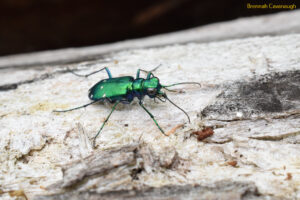
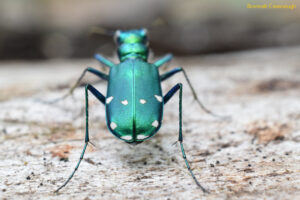
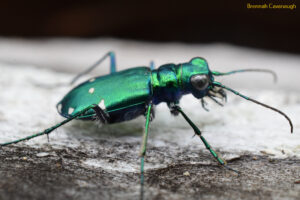
Even though tiger beetles have a bit of a reputation for being hard to photograph, I found the little green sweat bees to be much more difficult, at least in the circumstances the fallen tree offered. They were attracted to the dead tree as a nesting site and I would see them darting around the wood, but almost anytime they landed, they would immediately disappear into the tiny holes in the wood that were the entrances to their nests.
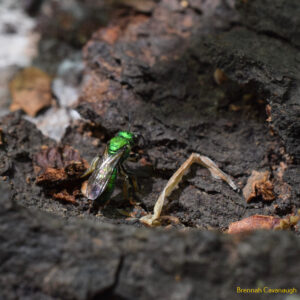
I’m sure there are more creatures than just the ones I noticed making use of the dead tree as habitat, and I’ll continue to notice more as I keep on visiting the tree.
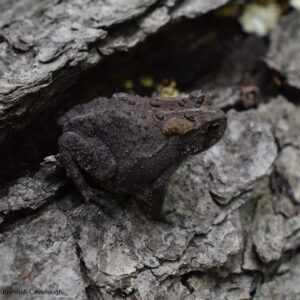
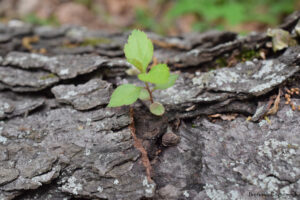
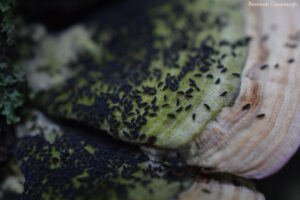

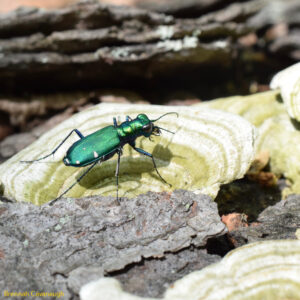
I went for a walk in the woods yesterday, thinking it was about time to check on the witch hazel and see if it was flowering (it was) and kept getting distracted by other interesting stuff around. So, here’s a selection of what I encountered.
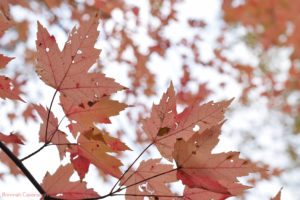
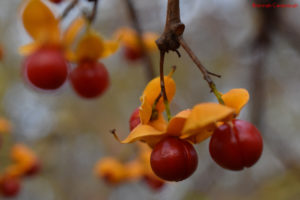
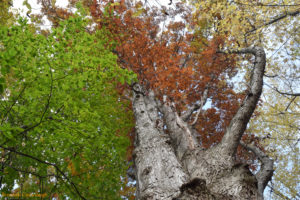
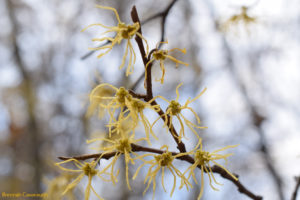
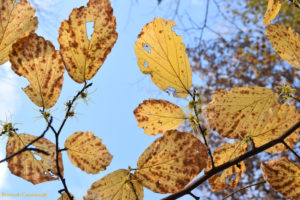
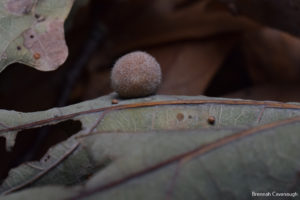
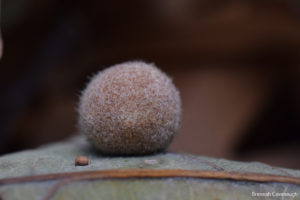
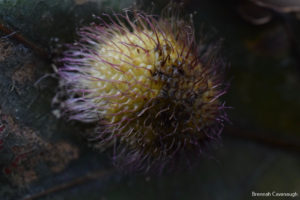

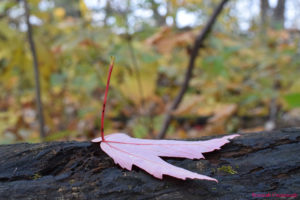

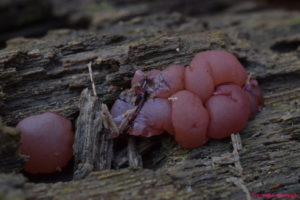

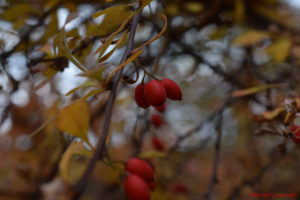

Back in the woods right now, the witch hazel plants have already shed their leaves for the winter. The plants would be bare now, except for all the flowers on them. Witch hazel is the only plant I know of that does this. The chrysanthemums and wild arugula are still flowering, but they still have leaves, and when they are done, they will die back to the roots for winter. I first noticed the witch hazel in the November after moving here. It was unexpected to see a flowering shrub in the mostly leafless, dormant woods like that, and it caught my attention. I was able to identify it easily and quickly; besides flowering at a very unusual time, its flowers were very unusual and distinctive looking. The only problem was that everything I had identified it by had to do with the flowers. Would I still be able to tell which one it was in the spring? I was curious to see what the leaves looked like, but I would have to wait several months without forgetting where it was. (These days I suppose I would probably just look something like that up, but at the time I wasn’t very experienced with that sort of thing.) I did notice that the tips of the twigs had a sort of zigzag shape where the leaves had been attached and I used that characteristic to identify several more of them in the middle of winter. By spring I still knew which plants were the witch hazels, and got to know what their leaves looked like. Later, when we planted hazelnut bushes, I realized where the ‘hazel’ part of the witch hazel’s name came from: the leaves of the hazelnuts looked almost identical.
The unusual flowering habits of witch hazels do bring up a question, though. What pollinates a plant that routinely flowers in November? Not surprisingly, I am not the first person to wonder about that. It is obviously an insect pollinated plant, but it blooms when there don’t seem to be insects around. And, as it turns out, its pollinator is also nocturnal, so you aren’t likely to see anything pollinating it. It is pollinated by an exceptionally cold hardy moth, which shivers to warm itself on the cold nights when it is active, similarly to the way that honey bees keep each other warm in the winter. Here is a link to an article that explains more about that: https://www.venerabletrees.org/winter-sex-witchhazel/
